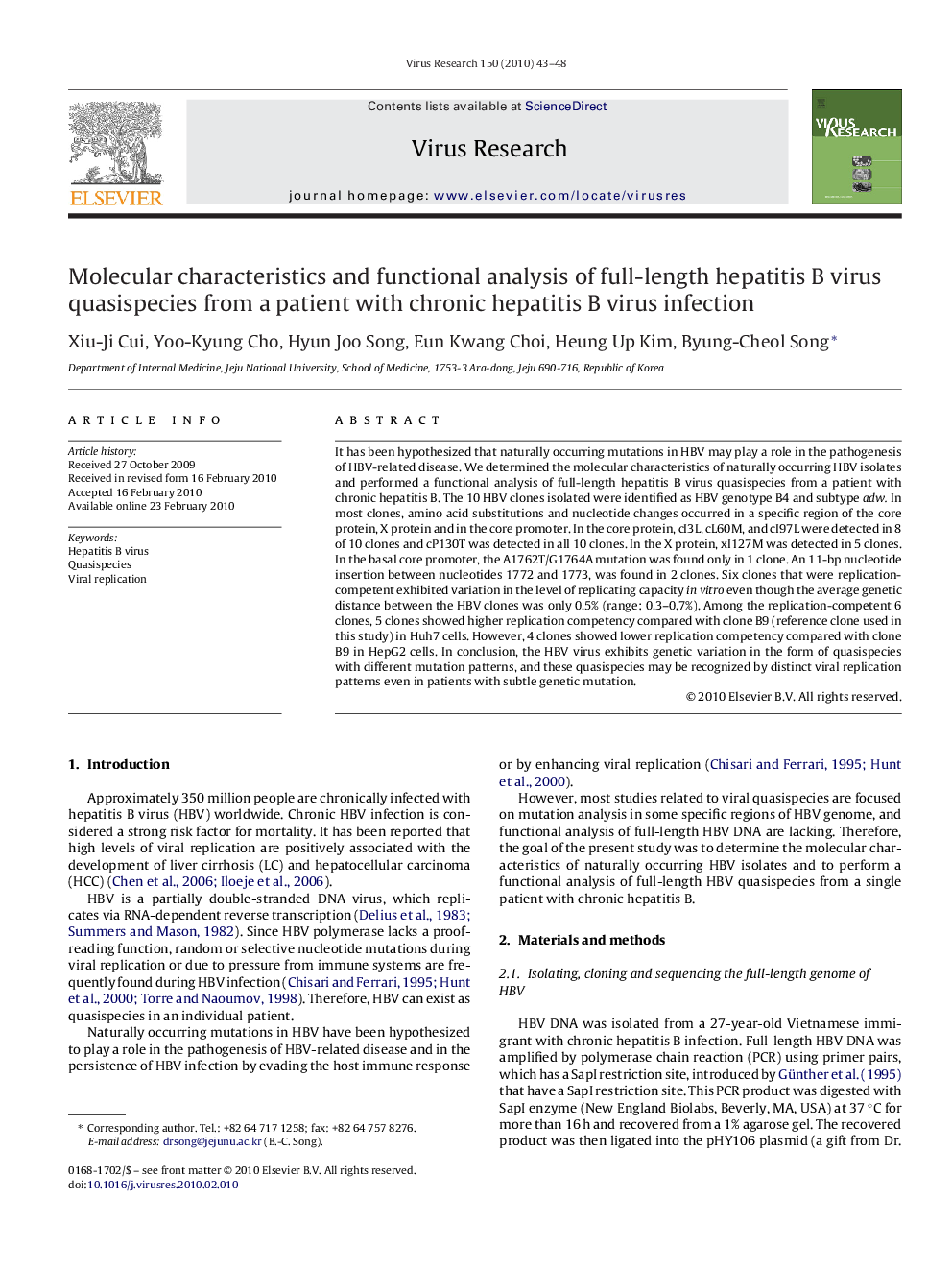| Article ID | Journal | Published Year | Pages | File Type |
|---|---|---|---|---|
| 3429286 | Virus Research | 2010 | 6 Pages |
It has been hypothesized that naturally occurring mutations in HBV may play a role in the pathogenesis of HBV-related disease. We determined the molecular characteristics of naturally occurring HBV isolates and performed a functional analysis of full-length hepatitis B virus quasispecies from a patient with chronic hepatitis B. The 10 HBV clones isolated were identified as HBV genotype B4 and subtype adw. In most clones, amino acid substitutions and nucleotide changes occurred in a specific region of the core protein, X protein and in the core promoter. In the core protein, cI3L, cL60M, and cI97L were detected in 8 of 10 clones and cP130T was detected in all 10 clones. In the X protein, xI127M was detected in 5 clones. In the basal core promoter, the A1762T/G1764A mutation was found only in 1 clone. An 11-bp nucleotide insertion between nucleotides 1772 and 1773, was found in 2 clones. Six clones that were replication-competent exhibited variation in the level of replicating capacity in vitro even though the average genetic distance between the HBV clones was only 0.5% (range: 0.3–0.7%). Among the replication-competent 6 clones, 5 clones showed higher replication competency compared with clone B9 (reference clone used in this study) in Huh7 cells. However, 4 clones showed lower replication competency compared with clone B9 in HepG2 cells. In conclusion, the HBV virus exhibits genetic variation in the form of quasispecies with different mutation patterns, and these quasispecies may be recognized by distinct viral replication patterns even in patients with subtle genetic mutation.
